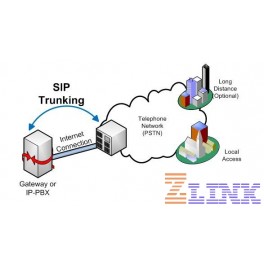 Maximize
Maximize  Maximize
Maximize  Maximize
Maximize We got this short explain about SIP from wikipedia and we think it will helpful with everyone who need basic information. If you need more support, pls contact us.
SIP trunking is a Voice over Internet Protocol (VoIP) and streaming media service based on the Session Initiation Protocol (SIP)[1] by which Internet telephony service providers (ITSPs) deliver telephone services and unified communications to customers equipped with SIP-based private branch exchange (IP-PBX) and Unified Communications facilities.[2] Most Unified Communications software applications provide voice, video, and other streaming media applications such as desktop sharing, web conferencing, and shared whiteboard.
Contents [hide]
1 Domains
2 Architecture
3 See also
4 References
Domains[edit]
The architecture of SIP trunking provides a partitioning of the Unified Communications network into two different domains of expertise:[3]
Private Domain: a VoIP solution realized at the customer's home that takes advantage of phone and unified communication services;
Public Domain: full VoIP access solution to the PSTN / PLMN property and responsibility of the ITSP that provides phone service.
The interconnection between the two domains must occur through a SIP trunk.
The interconnection between the two domains, created by transport via the Internet Protocol (IP), involves setting specific rules and regulations as well as the ability to handle some services and protocols that fall into the well-defined name of SIP trunking.
The ITSP is completely responsible to the applicable regulatory authority regarding all the following law obligations of the Public Domain:[4]
Tracking traffic;
Identification identity of users;
Implementation of the lawful interception mechanisms.
The private domain instead, by nature, is not subject to particular constraints of law, and may be either the responsibility of the ITSP, the end user (enterprise), or of a third party who provides the voice services to the company.
Architecture[edit]
In each domain there are elements that perform the characteristic features requested to that domain, in particular the result (as part of any front-end network to the customer) is logically divided into two levels:
The control of access (Class 5 softswitch);
Network-border elements[5][6][7] that separate the Public Domain from the Private Domain, implementing all the appropriate ITSP phone security policies.
The private domain consists of three levels:
Corporate-Border Elements that separate the Public Domain from the Private Domain, implementing all the appropriate company security policies.
Central Corporate Switching Node;
IP-PBXs.
No customer comments for the moment.